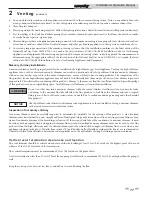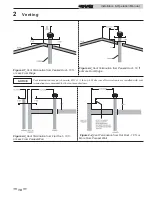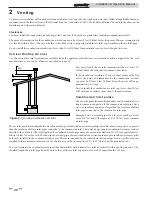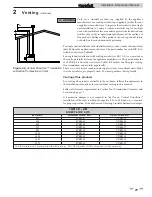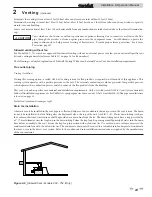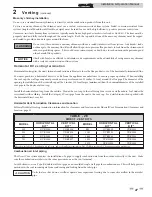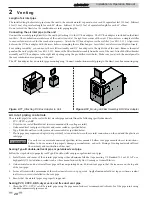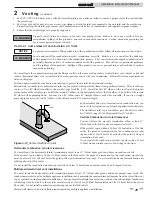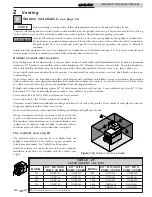
Installation & Operation Manual
2
Venting
(continued)
15
TABLE - 2A
FLUE AND AIR INLET PIPE SIZES
MODEL
FLUE SIZE
AIR INLET SIZE MODEL
FLUE SIZE
AIR INLET SIZE*
402
6"
6"
992
10"
10"
502
6"
6"
1262
12"
12"
652
8"
8"
1442
12"
12"
752
8"
8"
1802
14"
12"
--
--
--
2072
14"
12"
*Minimum diameter for air inlet pipe. Installer may increase diameter one pipe size for ease of installation, if needed.
General information
You must supply adequate combustion and ventilation air to this unit. You must provide minimum clearances for the vent
terminal from adjacent buildings, windows that open, and building openings. Follow all requirements set forth in the latest edition
of the National Fuel Gas Code, ANSI Z223.1, in Canada, the latest edition of CAN/CGA Standard B149 Installation Code for Gas
Burning Appliances and Equipment or applicable local building codes. Vent installations for connection to gas vents or chimneys
must be in accordance with “Venting of Equipment” of the above-mentioned standards.
NOTICE
Examine the venting system at least once each year. Check all joints and vent pipe connections for tightness. Also
check for corrosion or deterioration. If you find any problems, correct them at once.
Venting support
Support horizontal portions of the venting system to prevent sagging. Provide an upward slope of at least 1/4 inch per foot
(21mm/m) on all horizontal runs from the unit to the vertical flue run or to the vent terminal on sidewall venting installations.
Do not use an existing chimney as a raceway if another appliance or fireplace is vented through the chimney. The weight of the
venting system must not rest on the unit. Provide adequate support of the venting system. Follow all local and applicable codes.
Secure and seal all vent connections. Follow the installation instructions from the vent material manufacturer.
Barometric damper location
Any venting system option that requires a barometric damper must adhere to the following directions for optimum performance.
The preferred location for the barometric damper is in a tee or collar installed in the vertical pipe rising from the unit’s flue outlet.
The barometric damper MUST NOT be installed in a bull head tee installed on the unit’s flue outlet. The tee or collar containing
the barometric damper should be approximately three feet vertically above the connection to the unit’s flue outlet. This location
ensures that any positive velocity pressure from the unit’s internal combustion fan is dissipated and the flue products are rising
due to buoyancy generated from the temperature of the flue products. Adjust the weights on the damper to ensure that draft is
maintained within the specified range.

















